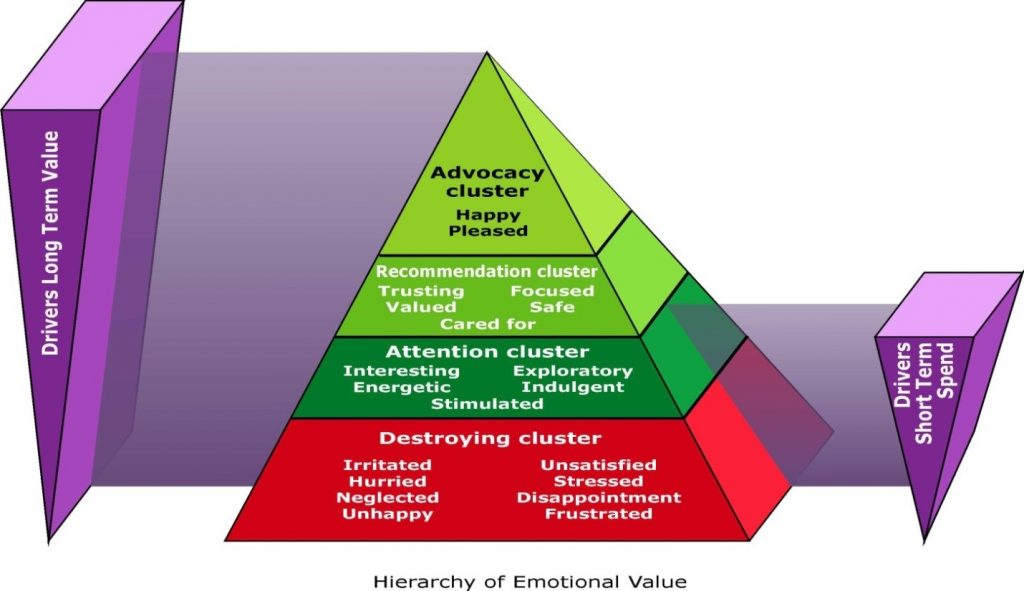Michael Lowenstein, Ph.D., CMC Thought Leadership Principal, Beyond Philosophy
Several years ago, in worldwide customer service experience research conducted for a major high-tech client, to drive stronger downstream customer behavior, it was found that processes and customer interaction had to take service employees well beyond the basics of knowledge, efficiency, and friendliness. Consistently, and irrespective of continent or country, the most effective reps showed true empathy for the customer’s issue, literally “owning” the issue as if it were theirs as well, walking in their shoes. and making a true emotional connection.
What wasn’t so completely understood at the time is that that this level of employee commitment and personal investment also positively impacted the employee experience. This was something of an epiphany for our client, representing an unanticipated ‘bonus’ result.
Customer experience pros can argue back-and-forth about whether a vendor can create deep emotions such as bonding and love in a customer. There are lots of articles and studies around stating things like “Highly engaged customers are loyal customers”. There’s little doubt that engaged customers can, and do, help shape the brand. They can also provide useful feedback and build brand-based communities. Today, is that enough?
From my perspective, at least, experiences that drive customers’ emotional brand trust and bonding can be both shaped and sustained. That’s largely a function of organizational culture, customer-focused processes – – and the direct and indirect contribution of employees through ambassadorship behavior.
On the employee side of the equation, ambassadorship builds both passion and partnership, enhancing the customer experience. And, as importantly, it also enhances the employee experience, something HCM and HR execs are just coming to realize and leverage.
There have been a number of professional and academic studies, in multiple industries, linking employee attitudes and behaviors with the value customers perceive in their experiences.. Through targeted research, and resultant training, communication, process, and reward and recognition programs, what we define as ambassadorship formalizes the direction in which employee engagement has been trending toward for years. Simply, the trend is optimizing and connecting employee commitment to the organization and its goals, to the company’s unique value proposition, and to the customer. This creates a state where all employees are focused on, and tasked with, delivering customer value as part of their job description, irrespective of location, function or level.
In other words, though there needs to be coordination and management of initiatives through HR and a CXO/CCO, everyone in the company, from the file clerk to the CEO, has this day-to-day responsibility embedded within their job descriptions..
This raises a classic chicken-and-egg question: Does focusing on the employee, and the emotions inherent to creating and sustaining a positive employee experience, generate as much benefit for the organization as enhancing the customer experience? There is ongoing debate about which should be the priority. Several entire books, in fact, have been written on this subject (such as The Customer Comes Second by Hal Rosenbluth and Diane Peters, and Firms of Endearment by Sheth, Sisodia, and Wolfe). There is general agreement that both developing employee ambassadors and customer advocates should receive high priority and emphasis if an enterprise is going to be successful. What building ambassadorship does mandate, however, is that having employees focus on the customer will definitely drive more positive experiences and stronger loyalty behavior for both stakeholder groups.
A recent article by a major employee research and engagement consulting organization were reported on results of their national workforce tracking poll, the highlight of which was that employee engagement had risen 1.2% between January and February, 2015 (to 32.9%) and that this new level was the highest engagement rate reported in the past three years.
The consulting organization went on to conclude from these findings that “Recent trends suggest that improvements in engagement coincide with improvement in unemployment and underemployment,” with the bottom line statement that
“A decline in the percentage of unemployed and underemployed Americans may have some influence on the percentage of engaged workers. As the job market for skilled employees becomes more competitive, it is possible that companies are putting more effort into engaging their current workers.”
At best, this conclusion feels like a major s-t-r-e-t-c-h of correlation analysis results.
This same organization believes that “Employee engagement is a leading indicator of future business success….”; and, to the degree that engagement level can impact staff turnover and productivity, both key contributors to profitability, this is a fair statement. However, when this organization, and others in the employee engagement research, training and consultation space, makes claims that engagement, in and of itself, contributes to customer value and loyalty behavior, two important questions need to be asked. Those question are: 1) Really? and, 2) Where’s the consistent proof for individual companies?
Whenever encountering white papers that conflate the connection between employee engagement and happy customers, the above questions need to be asked. Further, there is no specific connection to the emotional drivers of employee experience. Emotions, understood on an accepted negative to positive hierarchy (see below), are critical to understanding experience and behavior
 Source: Beyond Philosophy
Source: Beyond Philosophy
Just as satisfaction has little proven connection to customer behavior, employee engagement was not specifically designed to drive customer behavior nor was it designed to enhance the employee’s experience. To build on this statement, let’s begin by looking at the results of satisfaction on downstream customer action. Beyond extremely macro connection to sales, customer satisfaction (as expressed through the ACSI) has been shown to have little direct connection to purchase behavior, to the tune of 0.0% to 0.1% correlation. Many companies are still measuring customer sat in hopes that learning about its drivers will help build customer loyalty behavior, but satisfaction isn’t contemporary regarding longitudinal experience, decision-making, or reflective of what is going on in the customer’s real, emotional world.
As discussed on multiple occasions, and as proven in our own research ‘employee engagement’ has many meanings and interpretations, but relatively little of it has to do, at least by conceptual definition, specifically with impact on customer behavior. Typically, there is little or no mention/inclusion of ‘customer’ or ‘customer focus’ elements either in measurement or analysis of employee engagement. Though there is proof that customer experience, and resultant behavior, is impacted by engagement, it is more tangential and inferential than purposeful in nature.
A 2015 Advertising Age blog by a leading marketing research consulting organization encapsulated employee ambassadorship very well: Ambassadorship should be an enterprise-wide mantra for every organization: “All employees need to embody the intended customer experience . A narrative must be cascaded down to every single individual in the organization. Your employees must clearly understand their role in delivering the promise the narrative makes to the end customer. This requires multiple conversations and socialization across all business divisions and at every level, not just for customer support roles” To that quote, I say Amen.
You Also Might Like…
Republished with permission from CustomerThink.com
| Michael Lowenstein provides strategic consulting, research design and in-depth, leading-edge analysis that helps clients deliver outstanding business results through deeper customer experience, communication, relationship, employee and brand equity insights. Beyond Philosophy provide consulting, specialised research & training from our Global Headquarters in Tampa, Florida, USA. |



